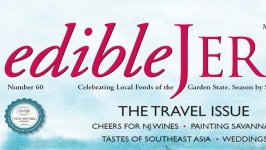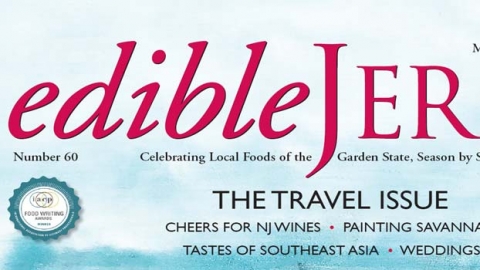Yogurt and Almonds and Akdamar Island
In 1996 I took a job teaching English at a university in Istanbul, and I wound up living there for some nine years over the next 26. Turkey is decidedly rich in culture—upwards of 40 distinct peoples have inhabited some part of it over the millennia, including Urartians, Hittites, Assyrians, Persians, Greeks, Lydians, Kurds and Armenians.
Having for years been beguiled by rumors of the preternatural beauty of the Lake Van region (backed up by stunning photos), I flew east in the summer of 2011. Friends who’d made the trip insisted that, whatever else I did, I had to see Akdamar Island and its church, left there like an elegant shell by history’s receding tide.
I got off a bus in Ahlat, a dusty, desolate town near Lake Van. Although Ahlat seemed empty, its one hotel, small and weather-beaten, was full. At a loss, I sat on a curb wondering where I was going to sleep.
A pickup truck pulled over, and the driver greeted me. Mustafa offered to take me to his village, some 16 miles distant, where for $15 I could stay with him and his family. So . . . search for lodging in Ahlat or put my safety in the hands of strangers? With evening falling, I threw my duffel bag into the bed of the pickup and squeezed into the cab with Mustafa and his college-age son, Baran.
After a bumpy ride on dirt roads, we pulled up to a flat-roofed, cinderblock house and parked next to a cow. As soon as I got out, the smells of animals— their musk, their urine, their manure—were almost pungent enough to make my eyes tear. The villagers were Kurds, not Turks, which wasn’t surprising; the population of eastern Turkey is overwhelmingly Kurdish.
Mustafa showed me to my room, an add-on to the house, and I had to step over a chicken nesting in the foyer. The bathroom was an outhouse complete with a spider lurking in an overhead corner. It was already late, so after walking around the village for half an hour, I slept on an uneven but comfortable mattress stuffed with wool.

This rustic breakfast on the open porch left me with a renewed appreciation for the most basic pleasures—to be sheltered in bad weather, out in good weather, to have clean clothes to wear, to share the land with the more docile beasts of the earth.

In the morning, Baran’s mother, wearing a red kerchief printed with dot-sized white flowers, set out breakfast. Let me start with the yogurt, a Turkish invention as it happens (borne out by the word’s etymology). Baran’s mother had made hers from milk she’d gotten from the cow swishing its tail 10 yards from the porch where we were sitting (on the floor, as is customary in much of the Middle East). It’s still the best yogurt I’ve ever had. She’d baked the bread, small loaves of grainy pita, in an outdoor oven. The halva, a sesame-based dessert, was also homemade, which meant it wasn’t gritty with sugar or as sweet. Purple figs had come from a tree in the yard. White cheese is a Turkish specialty akin to feta; a lump of it was pulled from a pot of water while I watched. The honey was paler and thicker than the stuff I had at home. I discovered its origin when a boy (16?) stopped by to say hello. He had a swelling under his eye, and Baran explained that he’d been stung by a bee; the honey had come from his hives.
This rustic breakfast on the open porch left me with a renewed appreciation for animal health and the most basic pleasures—to be sheltered in bad weather, out in good weather, to have clean, coarse clothes to wear (if being naked isn’t an option), to share the land with the more docile beasts of the earth. (“Oxen,” Walt Whitman writes, “what is that you express in your eyes? It seems to me more than all the print I have read in my life.”)
I didn’t want to leave the village, but I was on vacation, and I still had an itinerary. By afternoon I set off for Akdamar Island—a third of the way (south and east) around the lake. Glancing out a bus window, I saw the rickety hotel in Ahlat and felt deeply grateful it had been closed to me the previous day.
Lake Van, the easternmost tip of which is about 30 miles from the Iranian border, is Turkey’s largest lake. Like the Dead Sea, it is highly alkaline, and the only species of fish that survives in its deep-turquoise waters is the pearl mullet.
I boarded an hourly motorboat for the island. With its lone, tower-like church tucked among almond trees, it was indeed picturesque. Built in the 10th century by an Armenian king, the church stared fixedly across the water at the rugged slopes of a hulking mountain. The outer walls of the church were in superb condition, but the interior had not fared so well; the colors of the painted saints were often washed out where the images had not weathered away completely.
When I was outside again, a twenty-something Kurd started a conversation, and soon we were hiking around the island. At the top of a hill with an inspiring view, we both realized we’d forgotten to pack lunch. Reluctant to leave Akdamar, we gathered fallen almonds (the only trees the Armenian monks who’d once lived here had planted were almond trees). We palmed rocks and cracked them open. The nutmeat was shriveled and often bitter, but our hunter-gatherer meal fueled another hour or so of wandering.
We finally returned to the boat, and I watched the church— like a recurring image from an eerie dream—recede. While a quick Internet search will give you a good idea of my final, backward glance, the improvised lunch of almonds and the village breakfast— those you’d have to experience for yourself.







